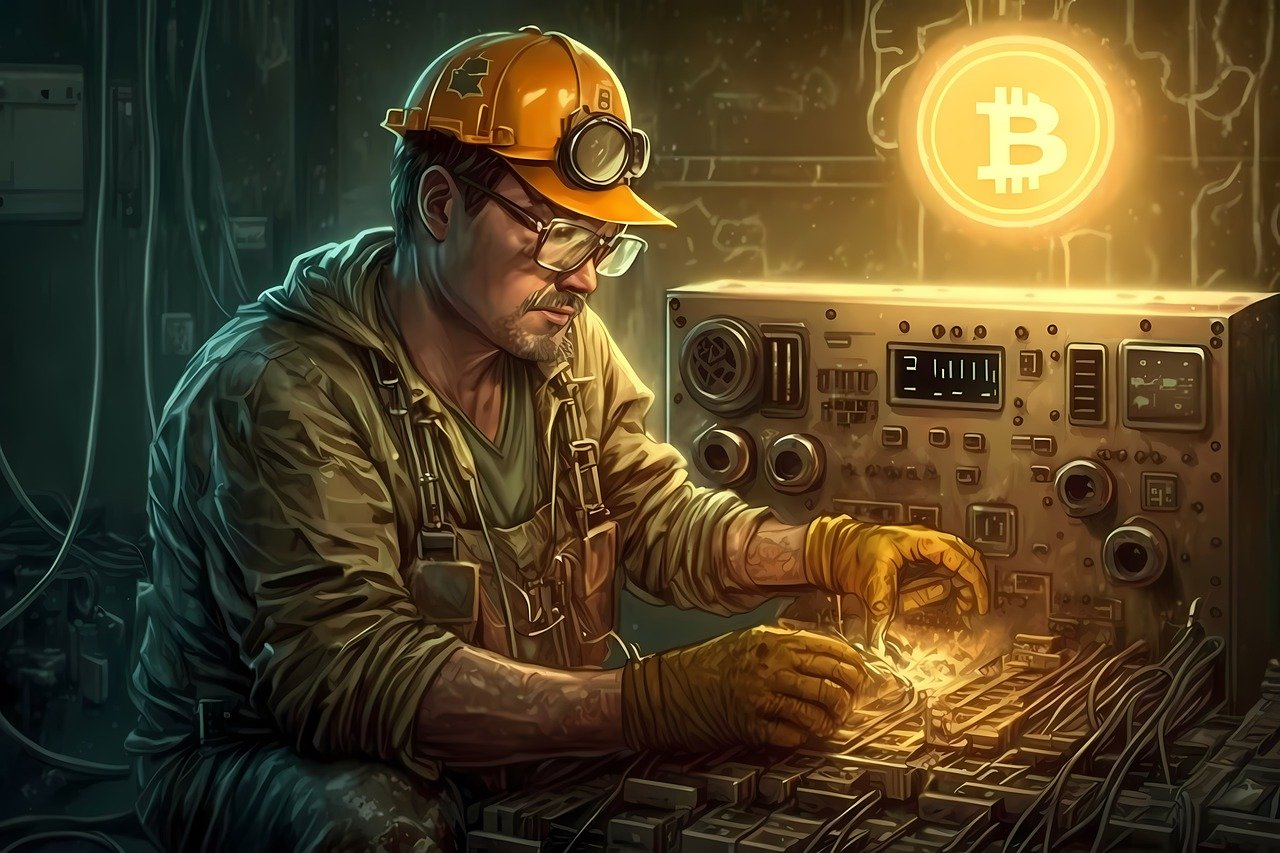Crypto
How the Rise in Bitcoin’s Price Affects the Planet’s Water Reserves
To verify Bitcoin transactions on the Blockchain, miners’ computers must compete to solve mathematical equations across the network. To do this, they make around 350 quintillion (that is, 350 followed by 18 zeros) guesses per second. In addition to cooling their computers, miners need coal- and gas-fired power plants to generate electricity, which also need water to lower the temperature.

Bitcoin has just surpassed the $40,000 barrier, something it has not done since April 2022, reactivating the fever for cryptocurrencies at the gates of the Bull run that its faithful predict for 2024.
The rise in Bitcoin’s price also coincides with the celebration of COP28 from Dubai, reactivating at the same time the figures of the ecological footprint that weighs on crypto assets.
Read more about bitcoin mining and how much water the activity consumes, and find the most important financial news of the day with our companion app Born2Invest.
Bitcoin requires a large amount of electricity to power the computers that keep it running, but also water, specifically, the equivalent of a small swimming pool per transaction
Until now, most consumption studies of the main cryptocurrency were reduced to electricity. Bitcoin consumes about 70.4 terawatt hours (TWh), the same as a country like Chile, according to the latest data from the Center for Alternative Finance at the University of Cambridge (CCAF). But the financial economist at the Vrije Universiteit of Amsterdam, Alex Vries, also thought of calculating how much water it consumes.
In 2021, it worked out to 1,600 gigaliters, which is equivalent to 16,000 liters of water per transaction, and 6.2 million times more than using a credit card. De Vries also believes that in 2023, consumption will reach 2,300 gigaliters.
To verify Bitcoin transactions on the Blockchain, miners’ computers have to compete to solve mathematical equations across the network, and collect a reward in Bitcoin. To do this, they make around 350 quintillion (that is, 350 followed by 18 zeros) guesses per second, an activity that consumes an enormous amount of computing power. “The right answer comes up every 10 minutes, and the rest of the data, quintillions of it, is useless,” complained De Vries.
In addition to cooling their computers, miners need coal- and gas-fired power plants to generate electricity, which also need water to lower the temperature.
“Many places in the world are suffering from drought, and fresh water is becoming an increasingly scarce resource. If we continue to use it to make useless calculations, the reality will be very painful,” warned de Vries in his study published in the journal Cell Reports Sustainability.
In the US, Bitcoin mining consumes between 93 and 120 gigaliters of water each year, which is equivalent to the average water consumption of 300,000 American homes, or a city like Washington.
“The price of Bitcoin has just increased, reaching its highest point of the year, despite the recent collapse of several cryptocurrency platforms. This will have serious consequences, because the higher the price, the greater the environmental impact,” warned de Vries.
“The most painful thing about cryptocurrency mining is that it uses a lot of computing power and a lot of resources that are not used to create something like artificial intelligence, which you can then use for something else. It’s just doing useless calculations.”
At a value of over $40,000 per coin, Bitcoin continues to expand around the world
In Central Asian countries, where dry weather is already putting pressure on freshwater supplies, increased Bitcoin mining activities will worsen the problem, De Vries predicted. According to the Cambridge Center for Alternative Finance, practically all of the world’s mining is in the hands of the US, China and Kazakhstan. In this country, Bitcoin transactions consumed 997.9 gigaliters of water in 2021, when the country is already dealing with a water crisis, which places it on the list of 20 most threatened for this reason.
On the other hand, it is a climate with long winters, reaching -21 degrees Celsius, which is why, together with cheap electricity, it has become one of the favorite countries of miners. Some companies use a filter system that reuses the air in the area to cool computers. There is also now the innovative idea of submerging the hardware in cooling oil.
De Vries proposes a modification of the Bitcoin mining software to reduce the energy and therefore the water necessary for this process, using renewable energies that do not use water, such as wind or solar.
“But do you really want to spend wind and solar energy on cryptocurrencies? In many countries, including the United States, the amount of renewable energy is limited, and that means something else would have to run on fossil fuels. I’m not sure how much you earn,” the economist said.
__
(Featured image by fszalai via Pixabay)
DISCLAIMER: This article was written by a third party contributor and does not reflect the opinion of Born2Invest, its management, staff or its associates. Please review our disclaimer for more information.
This article may include forward-looking statements. These forward-looking statements generally are identified by the words “believe,” “project,” “estimate,” “become,” “plan,” “will,” and similar expressions. These forward-looking statements involve known and unknown risks as well as uncertainties, including those discussed in the following cautionary statements and elsewhere in this article and on this site. Although the Company may believe that its expectations are based on reasonable assumptions, the actual results that the Company may achieve may differ materially from any forward-looking statements, which reflect the opinions of the management of the Company only as of the date hereof. Additionally, please make sure to read these important disclosures.
First published in EL MUNDO. A third-party contributor translated and adapted the articles from the originals. In case of discrepancy, the originals will prevail.
Although we made reasonable efforts to provide accurate translations, some parts may be incorrect. Born2Invest assumes no responsibility for errors, omissions or ambiguities in the translations provided on this website. Any person or entity relying on translated content does so at their own risk. Born2Invest is not responsible for losses caused by such reliance on the accuracy or reliability of translated information. If you wish to report an error or inaccuracy in the translation, we encourage you to contact us

-

 Markets1 week ago
Markets1 week agoDow Jones Strength Faces Risk From a Potential Yen Carry Trade Unwind
-

 Impact Investing6 days ago
Impact Investing6 days agoChristmas Plastic Waste and the Path to Circular, Low-Emission Solutions
-

 Africa2 weeks ago
Africa2 weeks agoOil Dependence and Economic Resilience: Morocco’s Path to Sustainable Growth
-

 Africa1 week ago
Africa1 week agoBantuHub and L’Archer Group Partner to Invest €1 Million in Congolese Startups

























